-
.
Confraternity "Cordone"
Today we are going to present a very special recipe: a twist cake!
We will do this together with our forum member Emma LAPERGAMENA. Original thread in Italian language HERE.
Emma is like a volcano, she can do thousands of things all together. When I called her to ask her whether she wanted to present a recipe to do all together she proposed THREE recipes!
She immediately showed some photos of a long twist pastry… Beautiful…
Shiny, inflated, crunchy and with a beautiful brown colour. The dough had strands similar to a cotton candy, with almonds and shiny orange zests…
Trust me, I was amazed by this gorgeous pastry…
And she says: “Nice, isn’t it? It’s a bit complicated, but it’s a great occasion to show high level techniques… I invented it, so we could call it Confraternita Braid Pastry…”
We decided to call it “Cordone della Confraternita”. “Cordone” in Italian is like a big rope, like those sailing ropes, where the strands are twisted together to provide strength to the rope. Well, this “Cordone” provides the idea of a link between all of us, like a brotherhood! Yeah exactly, like our “Confraternita”!
This means that we will have our own, DEDICATED recipe and trust me, it is an amazing recipe.
But let’s jump immediately into the recipe! I pass the floor to our Emma!
______________________________________________________The Confraternita Twist Pasty
This is a pastry that was conceived here, with you… To share it all together… It has a symbolic meaning, thanks to the name given by our Priore… The rope that keeps us together!
It is the Confraternity Sweet Pastry… For all of us, it contains all the techniques that we developed and tuned over the last years. We will use all those tricks and skills that makes the difference to obtain a perfect yeast pastry.
We are all very good at making pizza, but I would like that we all reach the same level with the complicated, traditional bread loaves (in Italian we call them “Grandi Lievitati”, which means “Big Rising”; they are a family of traditional products, normally with a complex recipe like Panettone. They require long rising time, they have big quantities of eggs, butter and sugar and they often requires at least two separate doughs. They are a big pride of the Italian Pastry tradition).
Let’s start with three important thigs:
- THE CHOICE OF THE FLOUR
- THE DOUGH STRENGTH AND ITS RELATIONSHIP WITH HOME KNEADING MACHINES
- RUSH… DO NOT UNDERESTIMATE THE RUSH… that’s one of the main reason of a proper dough development failure.
After this small premise I can present you IL CORDONE DELLA CONFRATERNITA:
- Sweet and durable, like a proper yeast loaf should be
- Very rich, like our Confraternity is rich of members always ready to share their knowledge
- Tempting… Like the first emotion we have when we enter in this group that is like a big family….
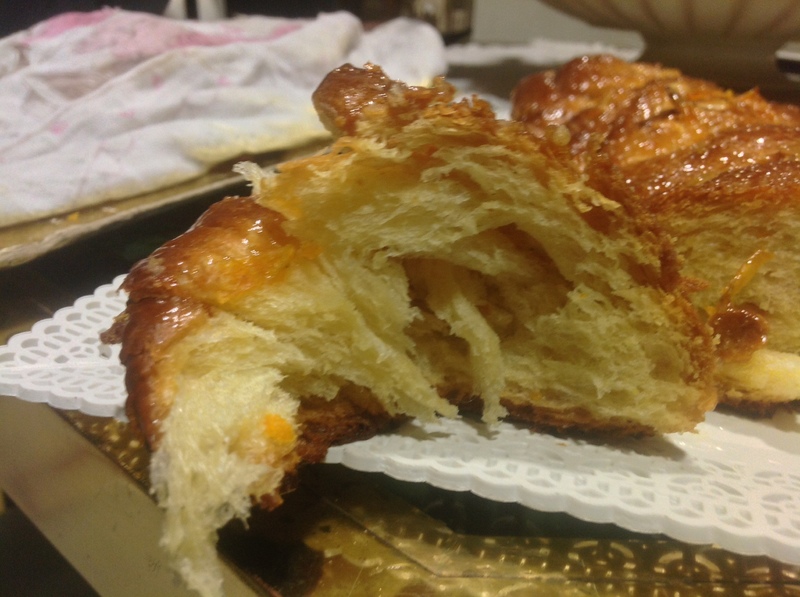
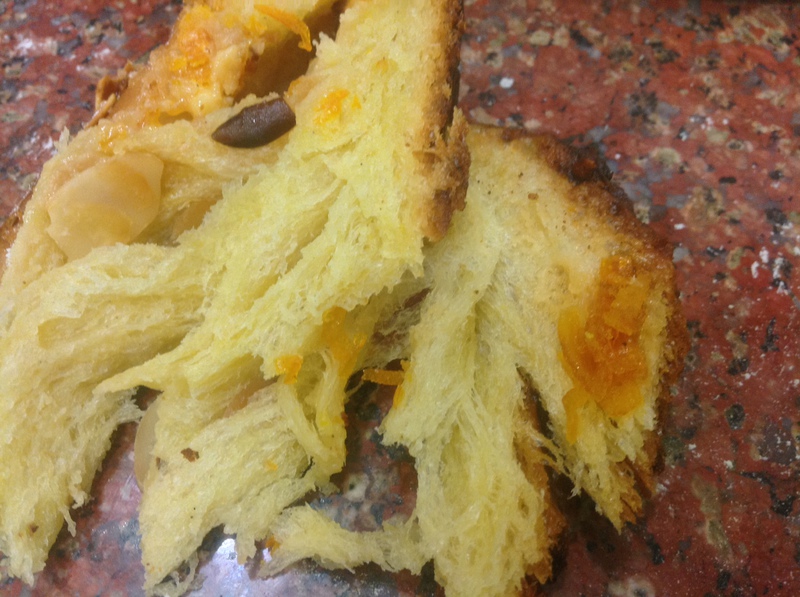
With the excess of dough I made these…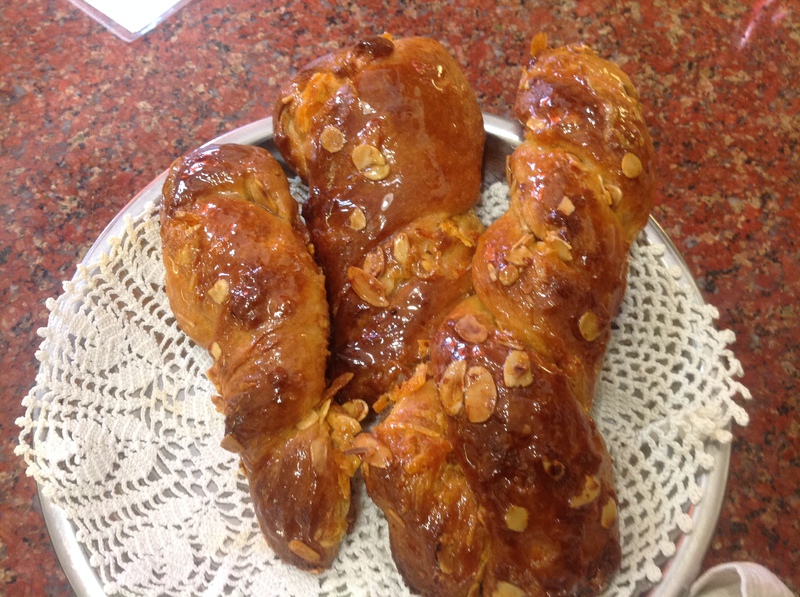
THE FLOUR…
The wheat flour should have a proper strength. More or less with a W290-350, or protein content >13-14%.
Normally this type of flour can be hydrated to 80% with fats like egg yolks and butter. This kind of flour will be able to adsorb all the liquids of the recipe, but it will also be strong with a dense gluten network. It will also rise slowly.
We should avoid flours that are too strong, otherwise when the product cools down it will have an unpleasant rubber consistency.
We will need 600 grams of flour. Here some flours that are suitable:
- Polselli Super
- Fior di pizza Mulino Fratelli D'Emilia
- Petra 1 with 20% Very Strong Canadian Flour Manitoba Lo Conte
- Pivetti Professional
- Caputo Red with 20% Very Strong Canadian Flour Manitoba Lo Conte
- Luna Gialla Molino Iaquone
AROMA for PANETTONE and CROISSANT
A good practice is to prepare this aroma few days before preparing the twist. During this time the aroma can develop and it becomes more intense. In case you don’t have the time you can use lemon and orange zests with vanilla bean.
I don’t like to use any artificial flavour, because we want to make a home-made product.
In case we don’t have any lemon or orange zests we can use a good quality liquor like Cointreau, Amaretto, Anisette or Rum. Add three spoons of the liquor to rice flour and honey, to obtain a viscous paste.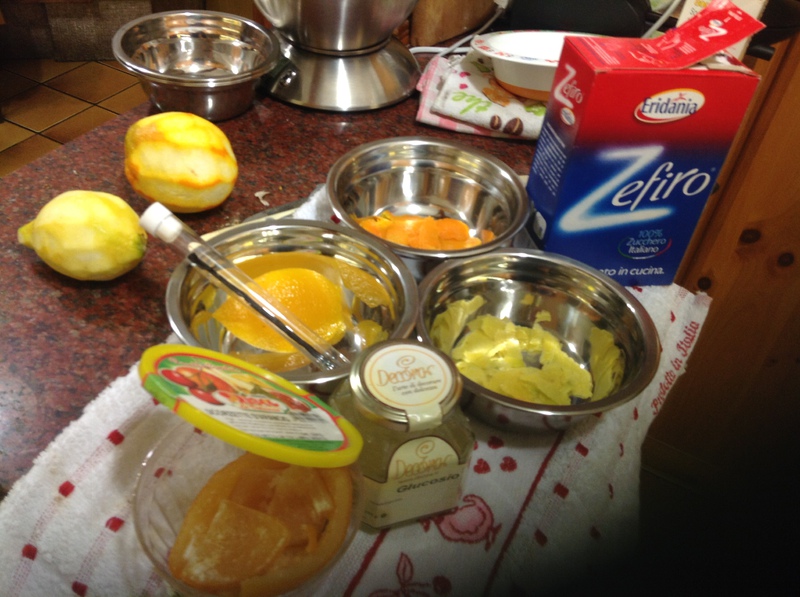
Ingredients for the Aroma:
Zests from 2 oranges
Zests from 1 lemon
One small piece of candied orange
One small piece of candied cedar (or orange again if you don’t have the cedar)
One Vanilla bean
A pinch of salt
One teaspoon of sugar
One teaspoon of honey (in the picture you see glucose syrup, but honey increases the shelf life)
Blend all the ingredient with a blender and if you see it is too thick add a little bit of water. You can make more than what you need and keep it in the fridge for the next time.
Put it in a small jar and add a little bit of liquor or rum. Leave it in the fridge. It will develop more flavour and aroma over time.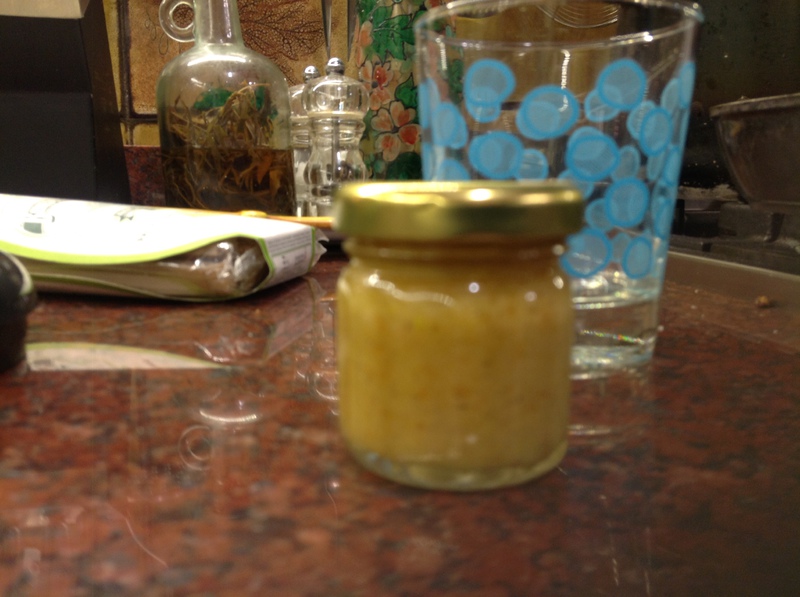
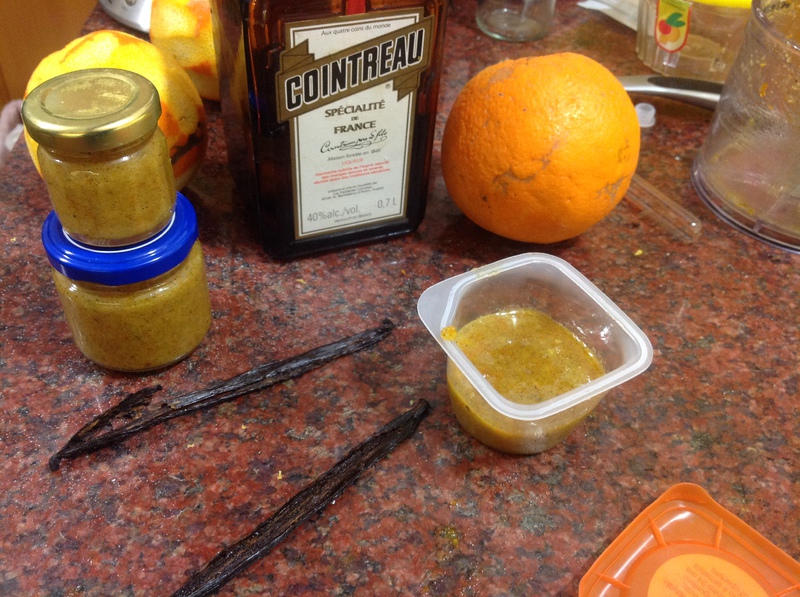
RECIPE FOR THE DOUGH:
With sourdough starter…
First dough
400 gr very strong flour (protein content >13.5% or W350)
100 gr good quality butter
200 gr of sourdough starter (feed it twice before using it)
100 gr of sugar
125 gr of eggs (2 large ones)
50 gr of milk
50 gr of water
6 gr of salt
1 teaspoon of liquor
Second dough
200 gr of very strong flour
80 gr of sugar
40 gr of milk
40 gr of water
50 gr of egg yolk (1 large egg)
2 gr of salt
30 gr of aroma
30 gr of honey
100 gr of good quality butter
_________________________________________________________________
With fresh compressed yeast…
Replace the sourdough starter with 15 gr of fresh compressed yeast.

Ingredients for the filling
Original version:
100 gr of white chocolate
80 gr of butter
2 teaspoons of sugar
100 gr of almonds
Orange zests
Caramelized oranges (see guidelines below)
5 oranges
Sugar
Water
Chocolate version:
80 gr of butter
2 teaspoons of sugar
100 gr of chocolate chips
If you like you can add some coconut or hazelnuts.
____________________________________________________________
Recipe for caramelized oranges
Remove the lemon skin and cut it into thin slices (see picture). Put them in a pot and cover them with water. Boil the water. Remove the water and repeat three times in total.
Remove the water, weigh them and add same quantity of water and sugar in a pot. Boil the water and wait that it evaporates completely. Place the orange skins on a tray a cover with baking paper. Leave them to dry for two days. They should become dry and crunchy.




Here some videos for the kneading techniques:
www.facebook.com/video.php?v=1426153651008683
www.facebook.com/video.php?v=1426177967672918
1) Important point
Before starting to describe the recipe I would like to spend few words of the importance of developing a strong gluten network. Developing the gluten network means to get a strong, elastic and smooth dough through mechanical energy provided by the kneading. In order to obtain this a kneading machine like a spiral or double arm it is advised, but of course almost nobody here has one of them. We normally have a standard stand mixer. These type of machines are not the best for doughs that contains a lot of fats and liquids because they stress and heat up the dough too much. The dough hook in fact cannot grab the dough and constantly flip it. It is really important that we DO NOT pass 26°C for the dough temperature.
However do not worry, we can still use our stand mixer, we just need to be more careful. Remember only if we develop a strong gluten network our dough will be able to rise at room temperature and during baking.
For pizza and bread we can easily knead with our hands, but for products containing butter and eggs it is almost impossible to make it by hand.
Considering that with a stand mixer the kneading time will be longer we need to choose a flour that has a good resistance to the kneading action.
It is very important to monitor the temperature of the dough during kneading, and if it pass the 25°C we can put it in the freezer to cool down and restart kneading later.

2) Important point…
Do not start adding the fats like butter before you have a strong gluten network (to understand if it is strong enough, lubricate your hands and pull a piece of dough. If it resist the pulling and it is elastic you are developing the gluten correctly).
This point is very important! If we add the fat too early, the gluten will be “slipping” and we will not create a strong network.
3) Important point
We have often seen before that some people are able to develop a strong gluten network and some don’t and they all followed the same recipe. This is because not every flour can adsorb a specific amount of liquid. In order to avoid adding too many liquids we can keep a part of it as last thing to introduce and decide whether or not we can add them. Only with experience we will learn when to stop adding liquids.
A last thing… We can always use freezer and fridge in order change the timings and bake or knead when we can and we are at home. We can also leave it in the fridge for two days. I did the same with a Panettone recipe and everything went perfect.
Ok guys, let’s start with the recipe!
First dough…
Start kneading with flour, sourdough starter (or fresh compressed yeast) and sugar. Add the eggs slowly. Add the liquor and if you start having a gluten network start adding slowly a little bit of water. Wait that this water is adsorbed before adding the next one.
Make sure the dough doesn’t heat up too much (max 26°C). Remember you don’t have to necessarily add all the water. When you finished with the water add the salt. Do not rush and stop the kneading if the temperature is going up too much. Place it in the fridge to cool it down if required. At this point I normally knead the dough with my hands on a table where I spread a little bit of butter. Then I place the dough in the fridge for at least 30 minutes before starting to add the butter.
If you have developed a strong gluten network you can start adding the butter little by little. Do not add the next piece of butter before the previous one it is adsorbed.
Finally place the dough on your working table and shape into a sphere. Wait 10 minutes and repeat the shaping. Then place it into a contained, lubricated with butter.
Rising time…
With fresh compressed yeast it is easy… The dough should become triple of its starting volume and the time is short. With sourdough starter it should take 12 hours at 26-27 degrees. My dough took 20 hours at room temperature. Do not start the next dough until the first one has tripled its volume.







Second dough………
Do not start the second dough if the first one did not tripled its starting volume. Weigh all the ingredients of the second dough.
Place the mixer bowl in the fridge one hour before in order to start with a cold bowl.
Start kneading with flour and the first dough. Add the aroma and salt. Mix well and flip the dough from time to time.
Flipping the dough is really important!!
When the dough is nicely mixed, start adding the egged little by little. Then add the sugar. Always control the dough temperature. Use the fridge if required.
Add the milk slowly and then the honey.
When the dough start to become strong, start adding the water little by little. Do not add more water if it is not required. When you have a strong gluten network, place your dough in the fridge for half an hour.
Remove the dough from the fridge and start adding the butter, always little by little. You should obtain the same gluten network as for the first dough.


Shape the dough into a round shape. It should more or less has this consistency…
Place the dough in a tight container for 12 hours at 26/27 degress. At room temperature it takes 20/26 hours.
Shaping and filling of “Cordone”
When the dough has tripled its starting volume…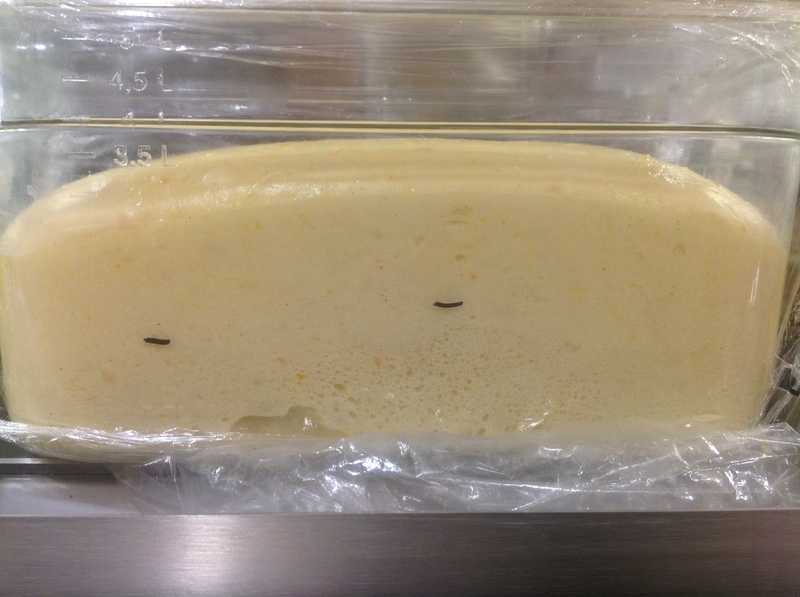
Roll down the dough either on a lubricated (with butter) table or on baking paper (wet the surface, so the baking paper will not move).
ATTENTION!! With this recipe you will have two “Cordone”. Fill all of it and then before twisting cut it in half and twist separately.
If you want to make them different of course you need to cut them in half before
Here a video of the rolling:
www.facebook.com/video.php?v=1426683820955666
Once you have rolled down the dough remove small stripes from the edges. We will need them after. Cover them because otherwise they would dry.
Start preparing the filling(s):
- Mix soft butter with sugar to create a cream
- Toast the almonds in a pan at low heat
Spread the butter cream on the surface with your hands…
Add the white chocolate (in small pieces) and the orange zests…
Roll up the dough… If it was kneaded properly it will roll up without breaking!

Once you have lifted up the dough place it onto a baking tray and leave it to rest for half an hour/an hour in the fridge. This way the twisting procedure will be easier.
Shaping…
Let’s move onto the shaping…
After the rest in the fridge the roll should be easier to handle. Cut it in half along the length. Remember you will get two “Cordone” from this dough. Cut with a sharp knife along the seam.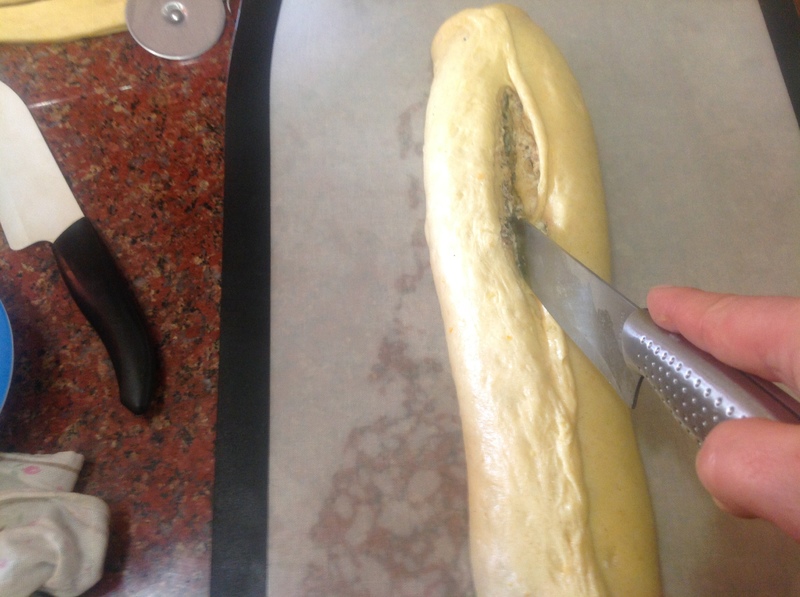
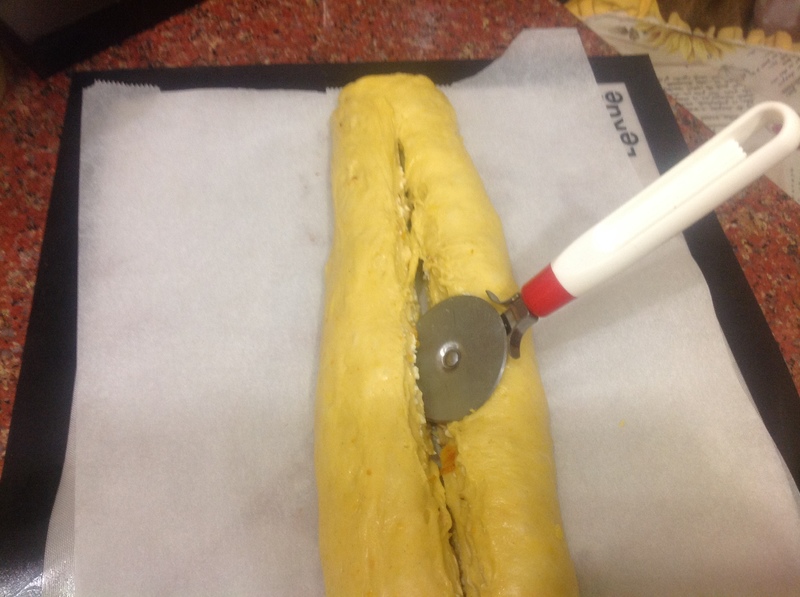
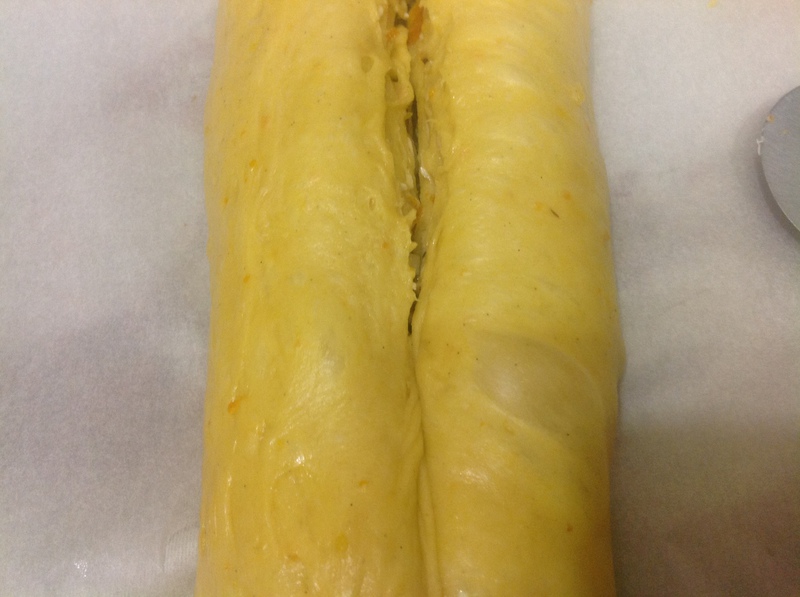
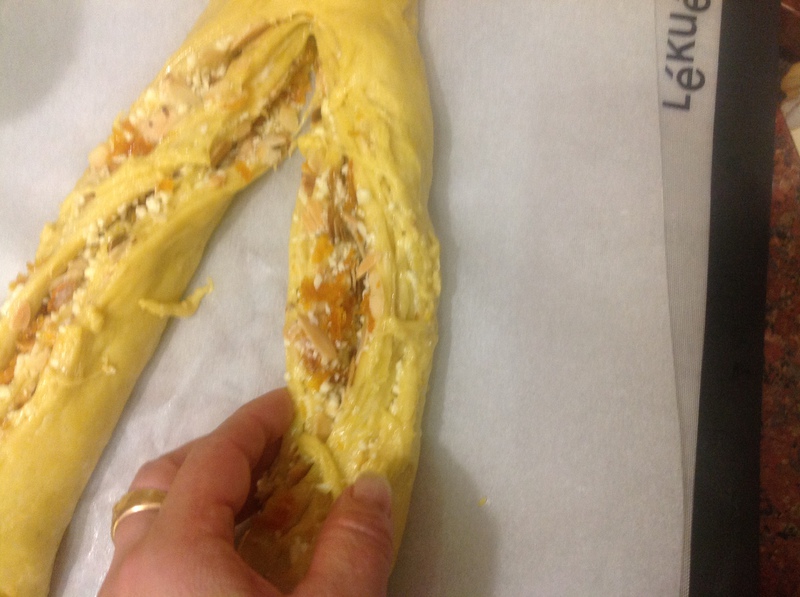
At this point start twisting. It is easier to show it than to explain it…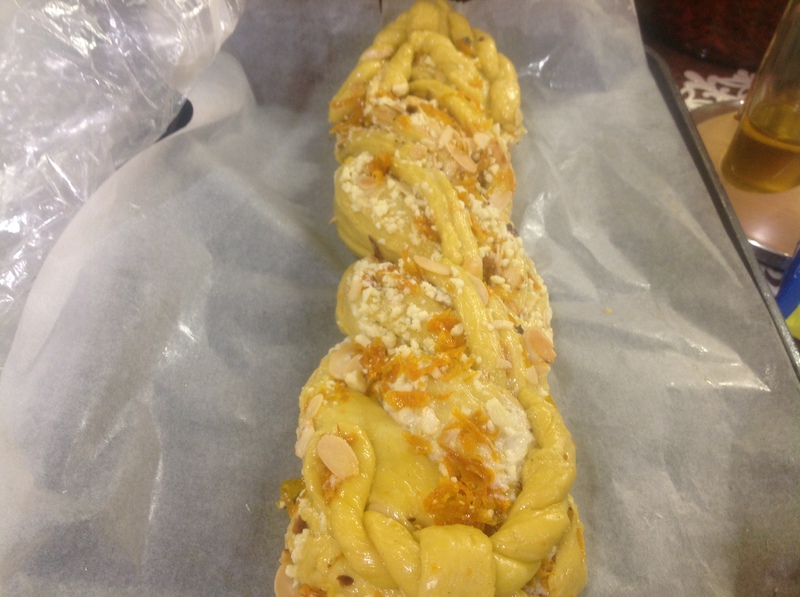
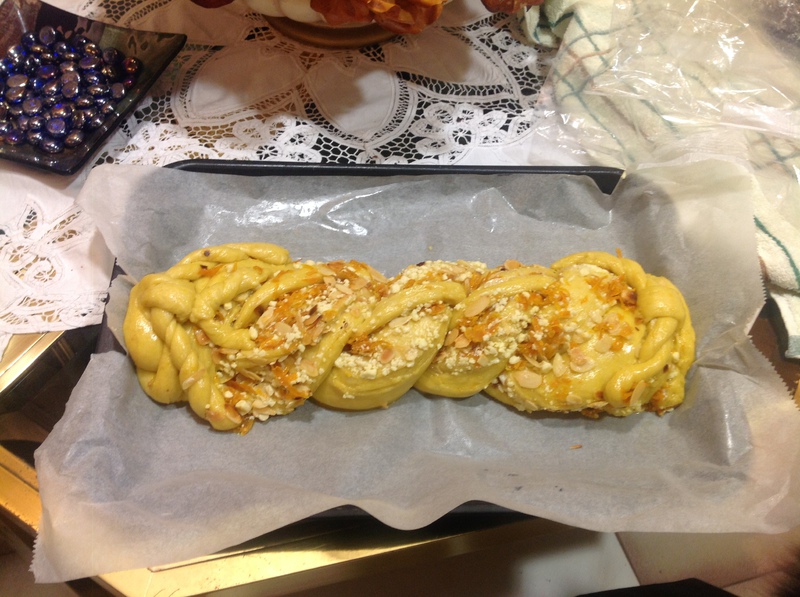
Chocolate version…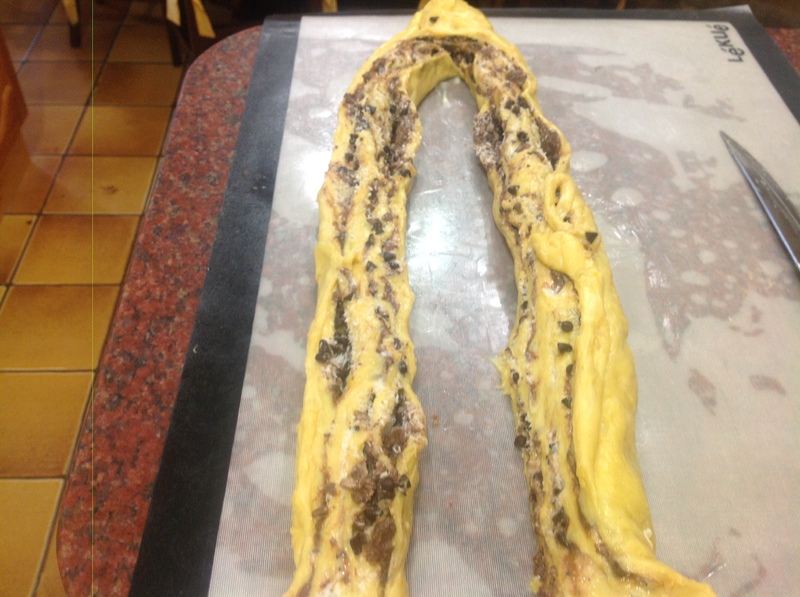
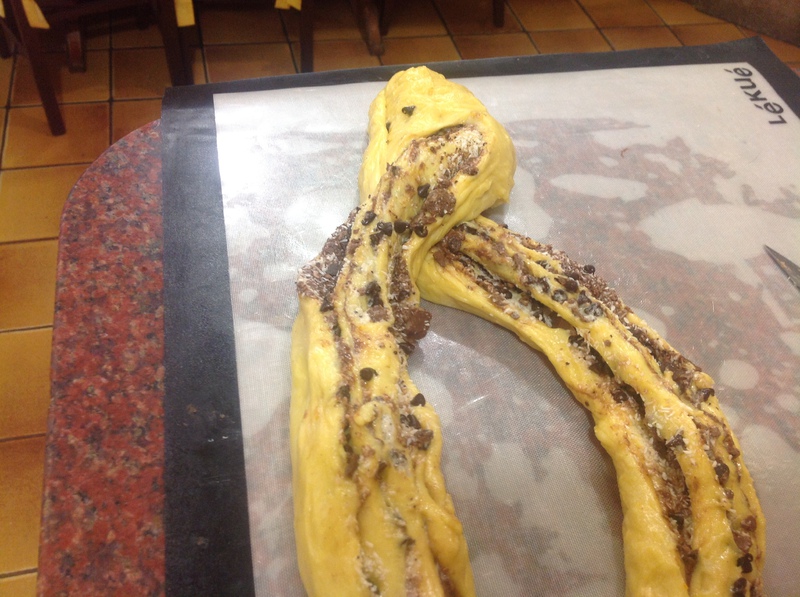
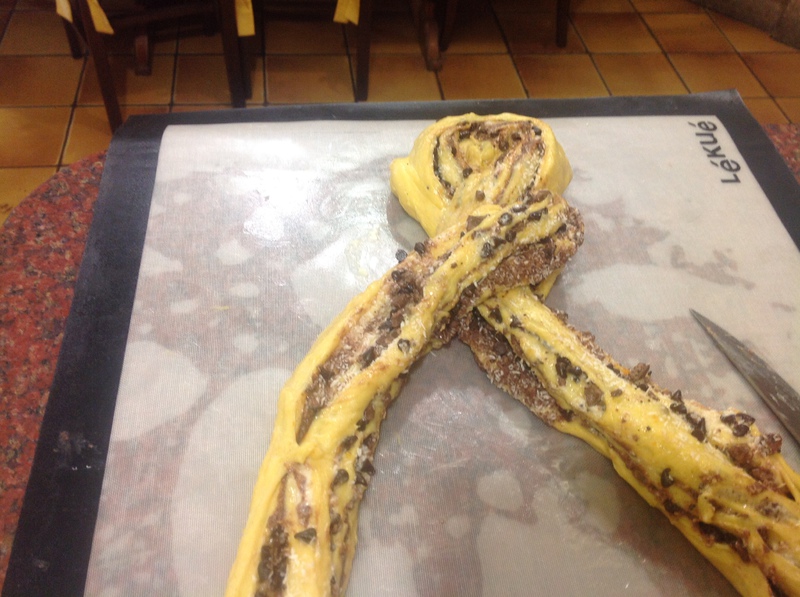
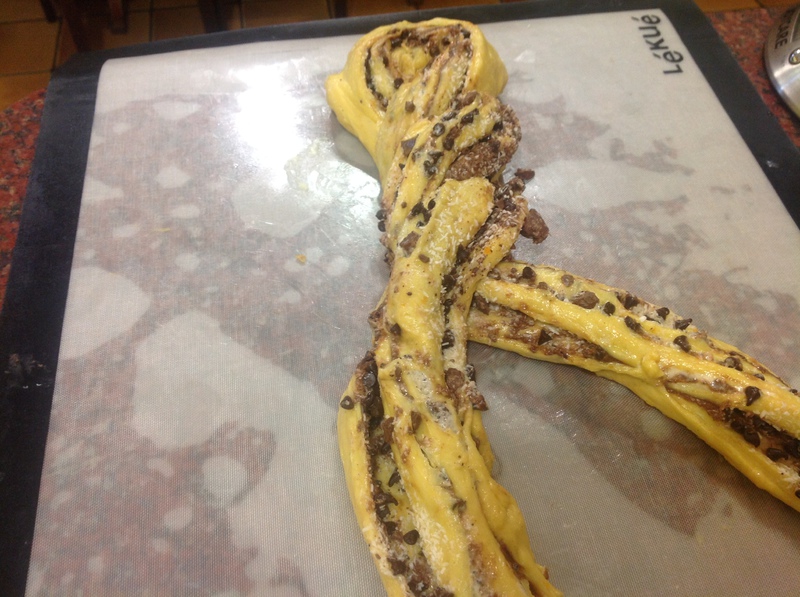
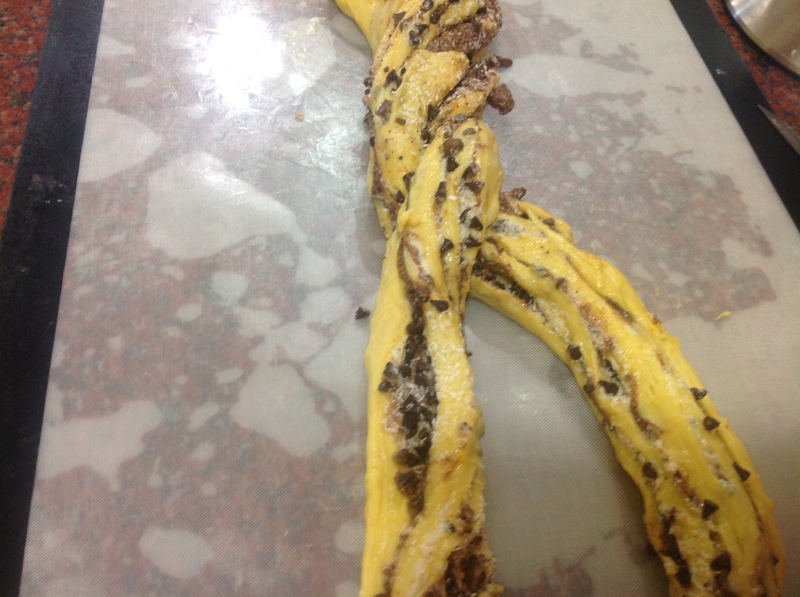
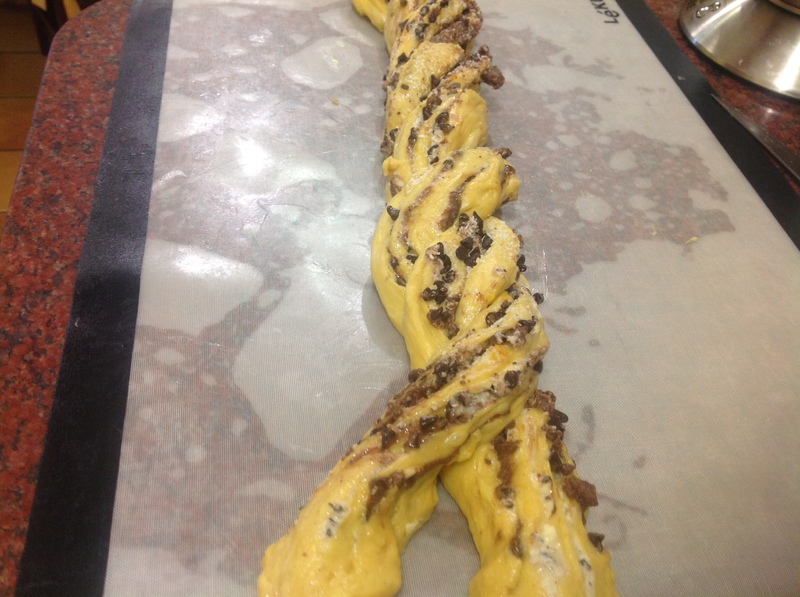
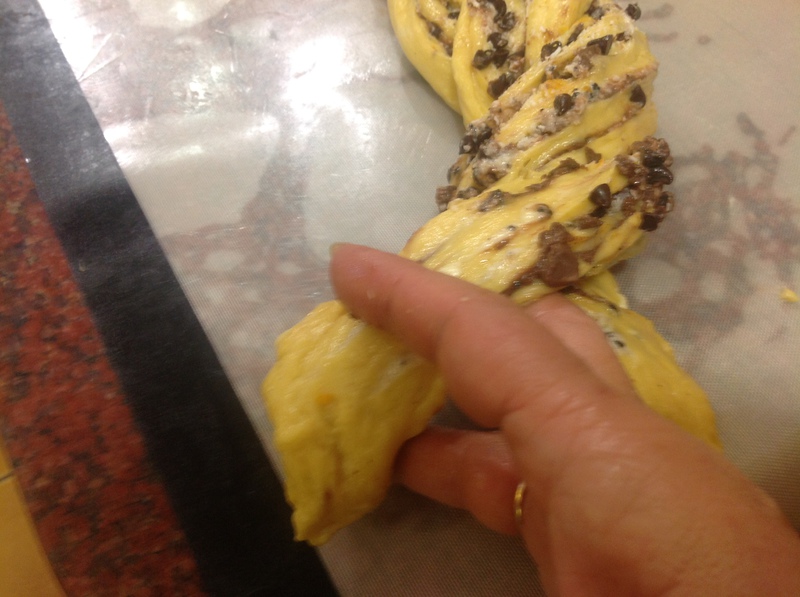
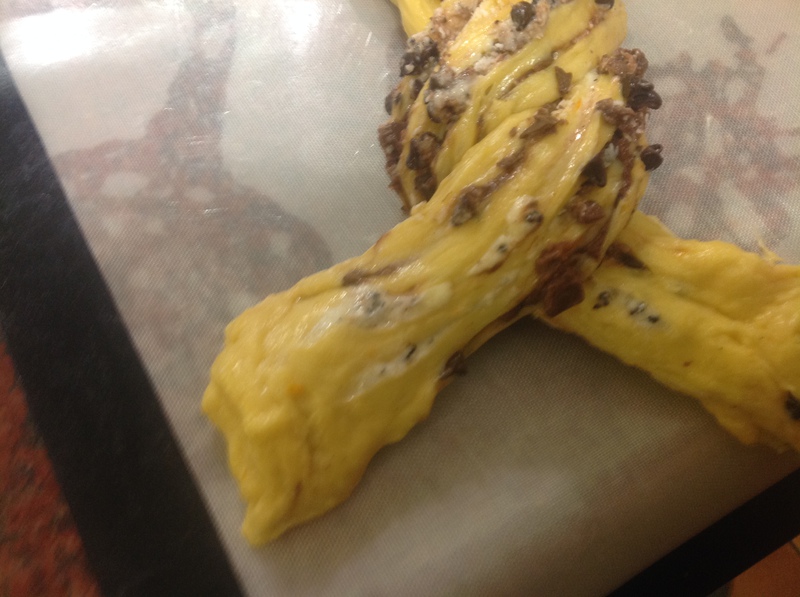
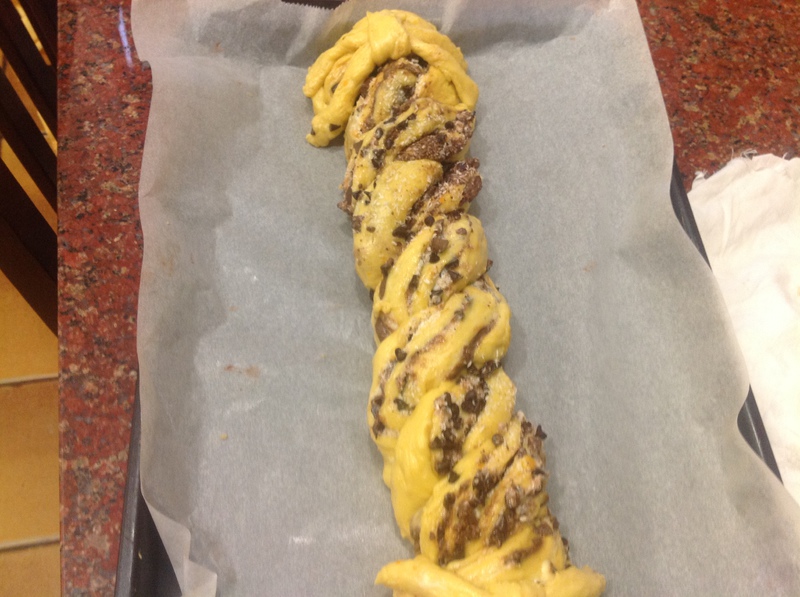
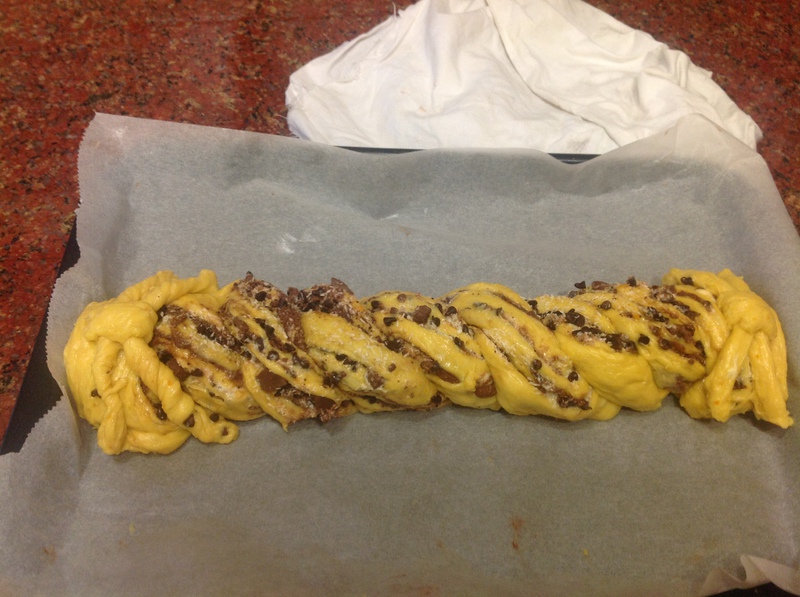
I don’t think I could have done better than this, considering I had my ipad in the other hand
Anyway do not worry, the dough is really elastic, just try to be gentle.
Now place the product onto a baking tray and wait until has doubled its initial volume.
BAKING AND FINAL POLISHING…
Once our “Cordone” has doubled its volume from this…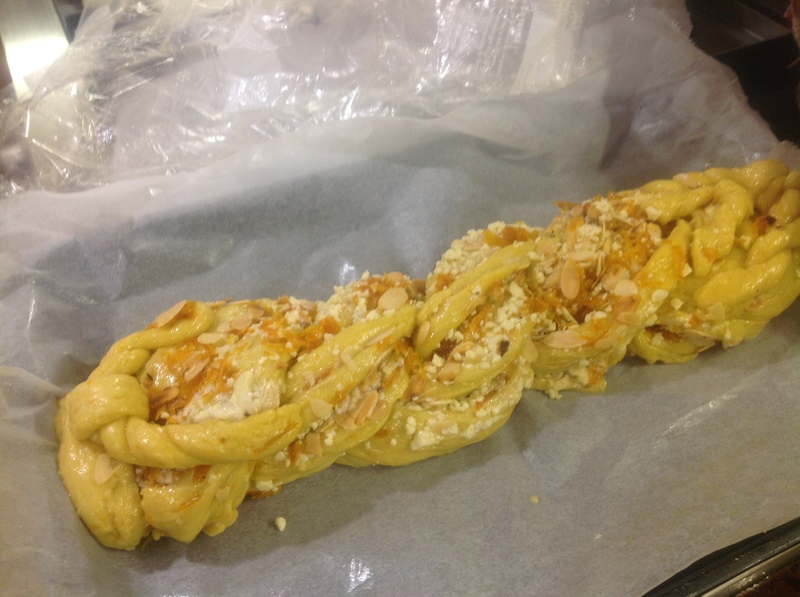
To this…
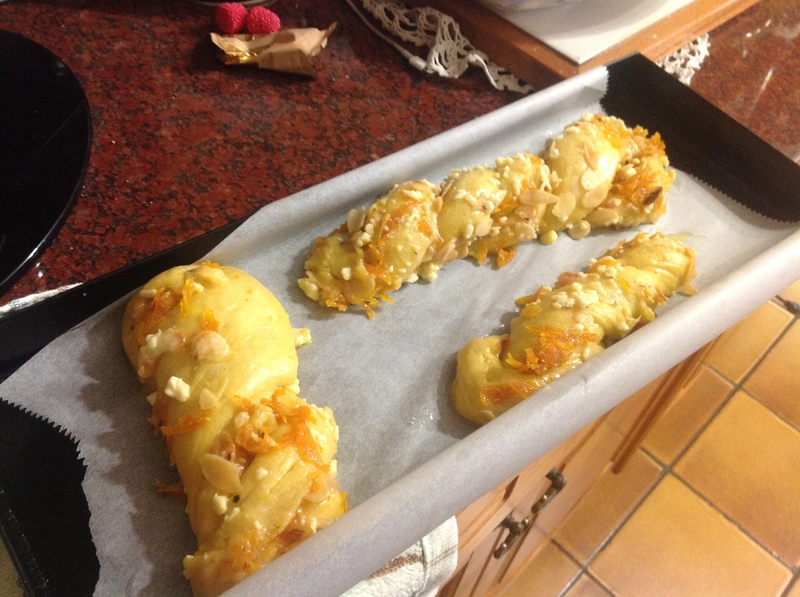

Now to wet the outer surface I prefer a spraying device with milk and a little bit of white part of the egg…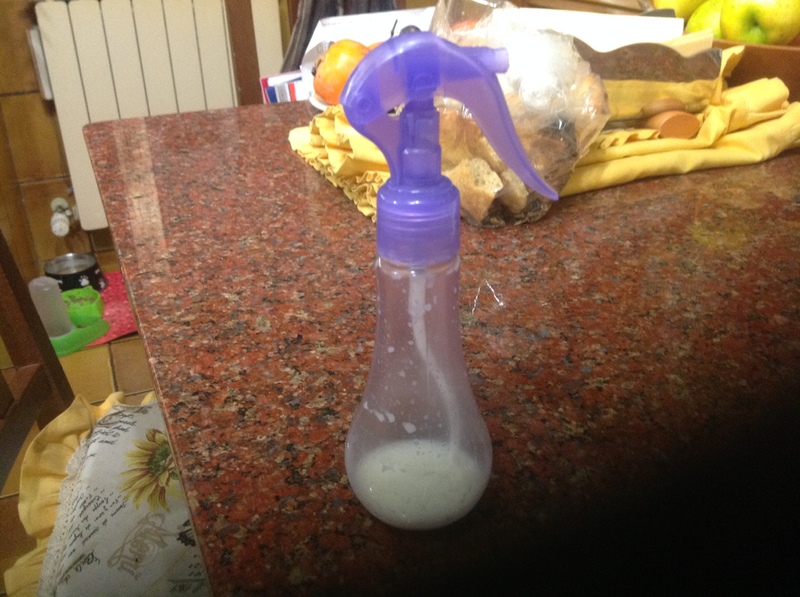
If you don’t have it, brush very gently…
Now spray the liquid on top of the dough and sprinkle some brown sugar.
Pre-heat the oven at 180°C. Place the dough into the oven and if after ten minutes the surface start to be brown reduce the temperature to 170°C. Bake for 45 minutes more or less. It should be gold brown and crunchy. If it starts to be too brown you can cover with thin foil.
Remember, every oven is different, you should fine the best way to bake specific for your oven. In the last 5 minutes keep the oven door slightly open to get the moisture out of the oven.
In the meanwhile let’s prepare the polishing ingredients…
In a small pot add 1 teaspoon of glucose syrup or 2 teaspoons of glucose powder with water to get a cream consistency.
1 teaspoon of sugar
2-3 teaspoons of water
Stir on the heat until it clears and becomes shiny
After one minute brush the product on all the outer surfaces.. -
.
Uoooooohhh ma chi sei? Un traduttore umano? Io sò...my nae in Daniela!
Bravissimo vacca boia!. -
.Uoooooohhh ma chi sei? Un traduttore umano? Io sò...my nae in Daniela!
Bravissimo vacca boia!
Haha grazie! Così imparo anche un po' di segreti nel frattempo! Ricetta spettacolare per altro devo provarla.
E' polacco? .
. -
.
Grazie, visto solo ora la traduzione che hai fatto per il Cordone della Confraternita  .
. -
.Uoooooohhh ma chi sei? Un traduttore umano? Io sò...my nae in Daniela!
Bravissimo vacca boia!
Haha grazie! Così imparo anche un po' di segreti nel frattempo! Ricetta spettacolare per altro devo provarla.
E' polacco?
Vedi! Lo scrivo pure male
 .
. -
.Grazie, visto solo ora la traduzione che hai fatto per il Cordone della Confraternita

Grazie!! Ah se trovate errori fatemi sapere ovviamente che correggo subito!!.
Confraternity "Cordone" (Twist) |


